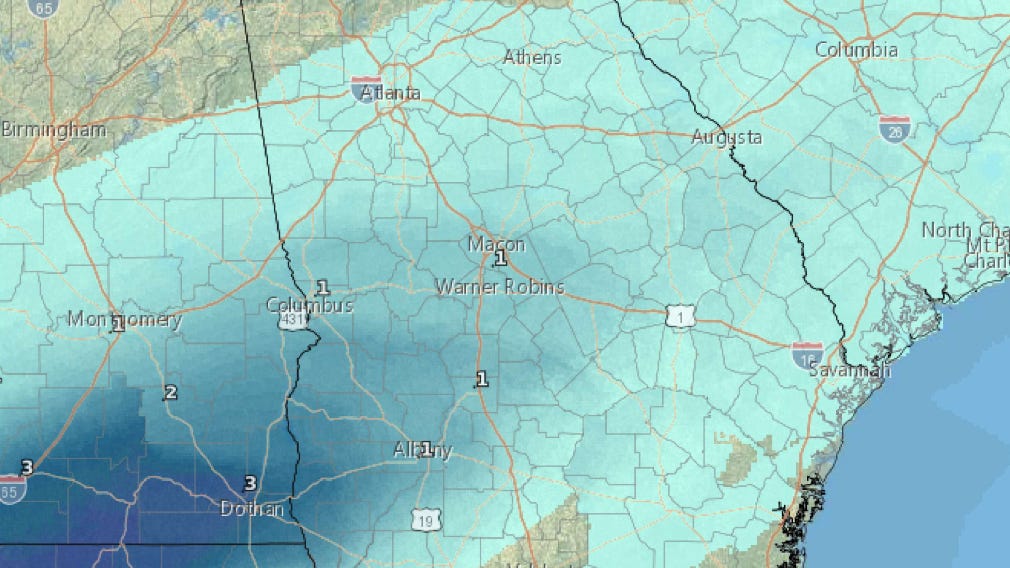Winter Weather Timeline: Planning For Seasonal Changes

Table of Contents
Understanding Your Local Winter Weather Patterns
Before you can create an effective winter weather timeline, you need to understand the specific challenges your region faces. This involves analyzing historical data and identifying potential hazards.
Analyzing Historical Weather Data
To accurately predict and prepare for upcoming winter weather, utilize readily available resources:
- National Weather Service: The NWS provides historical weather data, including snowfall amounts, temperature lows, and storm durations. This information is invaluable for predicting future events.
- Local News Sites and Weather Websites: Many local news stations and weather websites maintain extensive archives of past weather reports. These can provide a hyperlocal perspective on typical winter conditions.
- Past Winter Weather Reports: Review past reports to identify patterns and trends in your specific area. Note the average snowfall, the typical length of storms, and the coldest temperatures recorded.
Understanding your region's unique winter weather characteristics – be it heavy snowfall, icy conditions, or extreme cold – is the foundation of a successful winter preparedness plan.
Identifying Potential Hazards
Once you've analyzed historical data, identify potential hazards specific to your location. These might include:
- Power Outages: Winter storms can easily knock down power lines, leading to extended periods without electricity.
- Icy Roads: Freezing temperatures can create hazardous driving conditions, increasing the risk of accidents.
- Blizzards: These severe winter storms bring heavy snowfall, strong winds, and dangerously low visibility.
- Extreme Cold: Sub-zero temperatures pose a significant risk to health, particularly for vulnerable populations.
- Flooding: In some regions, rapid snowmelt or heavy rainfall can lead to significant flooding.
Considering these specific regional risks when developing your winter weather timeline is paramount.
Creating Your Personalized Winter Weather Timeline
A well-structured winter weather timeline involves proactive preparation throughout the fall and winter months, culminating in a post-winter review.
Early Fall Preparations (September-October)
Begin preparations well in advance of the first snowfall:
- Inspect Heating Systems: Ensure your furnace or heating system is working efficiently and schedule any necessary repairs.
- Stock Up on Essential Supplies: Gather a supply of non-perishable food items, bottled water (at least one gallon per person per day), and essential medications.
- Clean Gutters: Remove leaves and debris from gutters to prevent ice dams and roof damage.
- Winterize Vehicles: Check antifreeze levels, tire pressure, and battery condition.
These proactive measures lay the groundwork for a smoother and safer winter.
Mid-Fall Preparations (November)
As winter approaches, focus on emergency preparedness:
- Prepare Emergency Kits: Assemble comprehensive emergency kits for your home and vehicle (more on this in the next section).
- Arrange for Winter Vehicle Maintenance: Schedule a vehicle inspection and ensure it's ready for winter driving conditions.
- Check Smoke Detectors and Carbon Monoxide Detectors: Ensure these vital safety devices are functioning correctly.
These steps ensure you're ready to handle unexpected events.
Winter Storm Preparation (December-February)
During the peak winter season, stay vigilant:
- Monitor Weather Forecasts Closely: Pay close attention to weather alerts and warnings issued by the National Weather Service.
- Have a Communication Plan: Establish a way to communicate with family and friends in case of power outages or other emergencies.
- Understand Snow Removal Responsibilities: Know your responsibilities for clearing snow from walkways and driveways.
- Prepare for Power Outages: Have alternative lighting and heating sources readily available.
These steps ensure you're prepared for the worst winter weather can throw at you.
Post-Winter Preparations (March-April)
Once winter subsides, don't forget these crucial steps:
- Inspect for Winter Damage: Check for any damage to your home, roof, or property caused by snow and ice.
- Clean Up Debris: Remove snow, ice, and debris from your property.
- Store Winter Gear: Properly store winter clothing, tools, and equipment.
- Schedule Spring Maintenance on Heating Systems: Have your heating system inspected and serviced to ensure it's ready for next winter.
These steps ensure your home and property remain well maintained.
Essential Supplies for Your Winter Emergency Kit
Your emergency kit is your lifeline during a winter storm. It should include the following essentials:
Food and Water
- Non-perishable food items: Canned goods, energy bars, dried fruits, etc. Ensure enough food for several days.
- Bottled water: At least one gallon of water per person per day for several days.
- Water purification tablets: A valuable addition in case your water supply becomes compromised.
First-Aid and Medications
- Comprehensive first-aid kit: Including bandages, antiseptic wipes, pain relievers, and other necessary supplies.
- Essential medications: Ensure you have enough medication to last for several days or weeks.
- Prescription refills: Obtain refills for all necessary prescriptions well in advance of winter.
Lighting and Heating
- Flashlights: Multiple flashlights with extra batteries.
- Portable radio: A battery-powered radio to receive emergency broadcasts.
- Hand warmers: To keep your hands and feet warm in freezing temperatures.
- Blankets: Warm blankets to provide insulation and warmth.
Other Essentials
- Cell phone chargers: Portable chargers for your cell phone.
- Extra cash: In case ATMs are unavailable.
- Maps: Paper maps of your area in case GPS is unavailable.
- Tools: Shovel, ice scraper, and other tools for snow removal and other tasks.
- Extra clothing: Warm coats, hats, gloves, and scarves.
Planning for Peace of Mind with Your Winter Weather Timeline
Creating a comprehensive winter weather timeline involves understanding your local weather patterns, preparing your home and vehicle, assembling an emergency kit, and staying informed. Proactive planning significantly reduces the risks associated with winter weather and ensures peace of mind. Don't wait until the first snowflake falls! Start planning your comprehensive winter weather timeline today to ensure a safe and comfortable winter season. Remember, a well-prepared winter weather plan is your best defense against the unpredictable elements.

Featured Posts
-
 The Ubiquitous You Tube Impact And Implications For Content Creators And Consumers
Apr 25, 2025
The Ubiquitous You Tube Impact And Implications For Content Creators And Consumers
Apr 25, 2025 -
 Eurovision Song Contest Manchester Dates Venue And Essential Info
Apr 25, 2025
Eurovision Song Contest Manchester Dates Venue And Essential Info
Apr 25, 2025 -
 40 000 Expected At Harrogate Spring Flower Show
Apr 25, 2025
40 000 Expected At Harrogate Spring Flower Show
Apr 25, 2025 -
 Sadie Sink Visits Stranger Things Broadway Cast A Night Off Photo
Apr 25, 2025
Sadie Sink Visits Stranger Things Broadway Cast A Night Off Photo
Apr 25, 2025 -
 Canadas Election And The Trump Factor An Analysis
Apr 25, 2025
Canadas Election And The Trump Factor An Analysis
Apr 25, 2025
Latest Posts
-
 Bayern Munich Af D Politician On Board Unthinkable Says President
Apr 30, 2025
Bayern Munich Af D Politician On Board Unthinkable Says President
Apr 30, 2025 -
 Germany Spds Coalition Agreement Faces Party Vote Test
Apr 30, 2025
Germany Spds Coalition Agreement Faces Party Vote Test
Apr 30, 2025 -
 German Government Formation Coalition Deal Anticipated Today
Apr 30, 2025
German Government Formation Coalition Deal Anticipated Today
Apr 30, 2025 -
 Germanys Spd Key Vote On Coalition Agreement Imminent
Apr 30, 2025
Germanys Spd Key Vote On Coalition Agreement Imminent
Apr 30, 2025 -
 Sources German Coalition Agreement Expected Around Midday
Apr 30, 2025
Sources German Coalition Agreement Expected Around Midday
Apr 30, 2025
